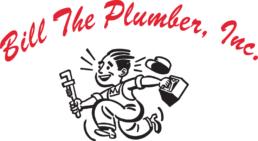Advanced Leak Detection
Mastering Leak Detection: Advanced Tips to Safeguard Your Home
Introduction:
Water leaks can wreak havoc on your home, causing damage to your property and skyrocketing utility bills. While basic leak detection methods are essential, mastering advanced techniques can save you from costly repairs and provide peace of mind. In this blog post, we’ll explore advanced leak detection tips to help you safeguard your home and conserve water.
- Monitor Water Bills:
Keeping a close eye on your water bills is one of the simplest yet most effective ways to detect leaks. A sudden increase in water usage could indicate a hidden leak somewhere in your plumbing system. Compare your current bills to previous months and investigate any significant spikes promptly. - Conduct DIY Leak Checks:
Regularly inspecting your plumbing fixtures and appliances can help you catch leaks early. Check faucets, showerheads, toilets, and pipes for any signs of dripping or moisture accumulation. Additionally, listen for unusual sounds such as hissing or running water, which could indicate a hidden leak. - Utilize Advanced Leak Detection Technology:
Investing in advanced leak detection technology can provide invaluable insights into your home’s water usage and pinpoint hidden leaks with precision. Consider installing a smart water meter or leak detection sensors that can alert you to leaks in real-time. These devices can help you identify issues quickly and prevent extensive water damage. - Perform Pressure Tests:
Fluctuations in water pressure can indicate leaks or other issues within your plumbing system. Conducting periodic pressure tests can help you identify abnormalities and pinpoint potential leaks. Use a pressure gauge to measure the water pressure at various points in your home, including faucets and appliances, and consult a professional if you notice any significant deviations. - Inspect Irrigation Systems:
If you have an irrigation system for your lawn or garden, it’s essential to inspect it regularly for leaks or malfunctions. Check for pooling water, soggy areas, or uneven water distribution, which could indicate leaks in the system. Performing routine maintenance and repairs can help prevent water waste and preserve your landscaping. - Consider Thermal Imaging:
For hard-to-detect leaks behind walls or underground, thermal imaging technology can be incredibly useful. Thermal cameras can detect temperature variations caused by water leaks, allowing you to identify hidden issues without invasive procedures. While professional thermal imaging services may be costly, they can provide valuable insights into your home’s water infrastructure.
Conclusion:
Mastering advanced leak detection techniques is crucial for safeguarding your home against water damage and conserving this precious resource. By monitoring your water bills, conducting DIY checks, utilizing technology, performing pressure tests, inspecting irrigation systems, and considering thermal imaging, you can stay proactive in identifying and addressing leaks before they escalate into costly problems. Remember, early detection is key to protecting your home and preserving water for future generations.


